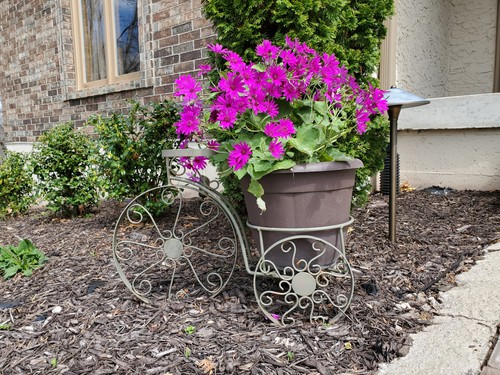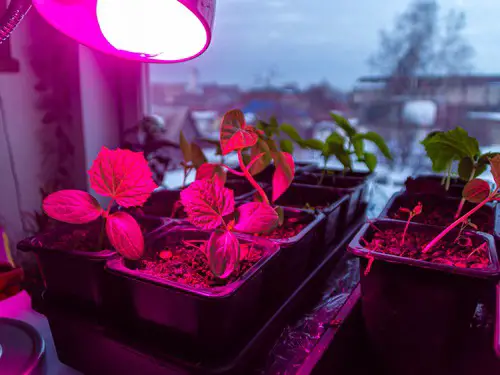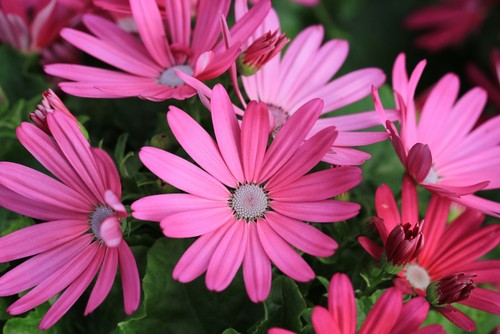Senetti plants, also known as Pericallis, are a popular choice for gardeners looking to add a pop of color to their outdoor space. These evergreen perennials produce large, daisy-like flowers that bloom from early spring until summer. With proper care and maintenance, Senetti plants can bloom multiple times a year, making them a great addition to any garden.
One question that many gardeners have when it comes to Senetti plants is whether or not they come back every year. The answer is yes, Senetti plants can come back every year, but it depends on a few factors. Understanding these factors and how to care for your Senetti plants can help ensure that they thrive and come back year after year.
Key Takeaways on Do Senetti Plants Come Back Every Year?
- Senetti plants are evergreen perennials that produce large, daisy-like flowers.
- With proper care and maintenance, Senetti plants can bloom multiple times a year.
- Senetti plants can come back every year, but it depends on factors such as climate and care.
You will also like these other informative related posts:
Do Polka Dot Plants Die After Flowering?
Water or Soil? Comparing The Best Medium for Optimal Plant Size and Health
Deciphering the Optimal Growth Time for Plants – Day or Night?
Understanding Senetti Plants

Senetti Plant Characteristics
Senetti plants, also known as Pericallis hybrids, are a type of flowering bush that produce daisy-like flowers in a variety of colors, including red, pink, white, yellow, and shades of blue. These plants are characterized by their deep green leaves that remain on the plant year-round, making them an attractive addition to any garden.
Senetti plants typically bloom in early spring and can continue to flower throughout the year under the right conditions.
One of the unique features of Senetti plants is their ability to rebloom after being cut back. By cutting the plant back by 50 percent, gardeners can encourage a fresh flush of blooms. Senetti plants can produce up to 200 blooms on a single plant grown in a 10-inch pot, making them a popular choice for container gardening.
Senetti Plant Varieties
There are several varieties of Senetti plants available, each with its own unique characteristics. The Suntory Collection, for example, includes several varieties of Senetti plants, including the Blue Bicolor, Magenta Bicolor, and Pink Bicolor. These plants are known for their bright, eye-catching colors and ability to rebloom throughout the year.
Other popular varieties of Senetti plants include the Senetti Deep Blue, which produces vibrant blue flowers, and the Senetti White, which features pure white blooms. Gardeners looking for a more unusual color may be interested in the Senetti Coral, which produces soft pink flowers with coral undertones.
Overall, Senetti plants are a versatile and attractive addition to any garden. With their year-round green leaves and ability to produce vibrant blooms throughout the year, they are sure to be a favorite among gardeners of all skill levels.
Planting and Growing Senetti
Ideal Conditions for Senetti

Senetti plants thrive in full sun, but they can also tolerate some shade. They prefer well-draining soil that is rich in organic matter. Senetti plants grow best in soil with a pH between 6.0 and 6.5.
Planting Procedure
Senetti plants can be grown from seed or cuttings. If planting from seed, it is best to start them indoors in early spring. Once the seedlings have developed their second set of leaves, they can be transplanted outdoors.
To plant Senetti, dig a hole that is twice the size of the plant’s root ball. Place the plant in the hole and backfill with soil, pressing down gently to remove any air pockets. Water the plant thoroughly after planting.
Senetti plants benefit from regular feeding with a liquid plant food or pelleted chicken manure. They should be watered regularly, but be careful not to overwater as this can lead to root rot.
Senetti is a perennial shrub that can survive winter in most cases. However, it is important to winterize the plant properly to give it the best chance of survival. In colder climates, it is recommended to cover the plant with a layer of mulch to protect the roots from freezing.
Breeding new Senetti plants is possible, but it is a tender plant that requires specific conditions for successful breeding. It is best to leave breeding to experienced growers.
Care and Maintenance of Senetti Plants

1. Watering and Fertilizing
Senetti plants require adequate water to thrive, especially during the hot summer months. It is best to water them deeply once a week rather than shallowly every day. The soil should be moist but not waterlogged. Overwatering can cause root rot, while underwatering can lead to stunted growth and poor blooming.
Fertilizing is also important for the health of Senetti plants. A balanced fertilizer with equal amounts of nitrogen, phosphorus, and potassium can be applied once a month during the growing season. Alternatively, a slow-release fertilizer can be applied at the beginning of the season for continuous feeding.
2. Pruning and Deadheading
Pruning and deadheading are essential to keep Senetti plants looking their best and encourage reblooming. Deadheading, or removing spent flower heads, will stimulate the plant to produce more blooms. It is best to deadhead the plant regularly, especially during the growing season.
Pruning is also important for maintaining the shape and size of the plant. Senetti plants can be cut back by half after the first bloom in early summer to promote excellent branching and more blooms. Cutting back the plant also helps to prevent legginess and encourages root growth.
3. Overwintering
Senetti plants are generally treated as annuals, but they can be overwintered in mild climates. To overwinter the plant, it is best to move it to a protected area where it can receive adequate water and sunlight. The plant should be cut back to about six inches and covered with a layer of compost or mulch for insulation.
In windy areas, it is best to stake the plant to prevent it from toppling over. Senetti plants prefer cool temperatures and afternoon sun, so it is important to choose a location that meets these requirements.
Senetti Plants and the Environment
Senetti plants are a popular choice for gardeners due to their bright, eye-catching flowers that bloom in winter, spring, and fall. But, do Senetti plants come back every year? The answer is, it depends.
Senetti plants are actually annuals, meaning they complete their life cycle in one growing season. However, with proper care, they can be treated as perennials and return year after year.
Senetti Plants and Pollinators
Senetti plants are a great addition to any garden as they attract pollinators such as bees and butterflies. The bright, colorful flowers of Senetti plants provide a great source of nectar for these important insects. By planting Senetti plants, gardeners can help support the local ecosystem and promote biodiversity.
Senetti Plants and Disease Resistance
Senetti plants are known for their disease resistance, making them a low-maintenance option for gardeners. However, they can still be susceptible to mildew if not properly cared for.
To prevent mildew, it is important to plant Senetti plants in partial shade and to avoid overwatering. Applying a layer of mulch around the base of the plant can also help to retain moisture and prevent mildew.
Do Senetti Plants Come Back Every Year?

Senetti plants are a popular choice for gardeners who want to add some color to their gardens. They are known for their bright flowers that bloom in winter, spring, and fall, making them a great choice for year-round color. But do Senetti plants come back every year?
The answer is yes and no. Senetti plants are technically perennials, which means they can come back year after year. However, they are often treated as annuals because they are not reliably hardy in all climates.
In areas with mild winters, Senetti plants may come back year after year without any special care. In colder climates, however, they may not survive the winter.
When Senetti plants are grown as perennials, they will go dormant during the winter months. This means that the plant will stop growing and may appear dead, but it is actually just conserving energy until the weather warms up again. In the spring, the plant will start to grow again and will produce new leaves and flowers.
To improve the chances of Senetti plants coming back year after year, gardeners can take a few steps to help protect the plants during the winter months. These steps include:
- Planting Senetti plants in a sheltered location where they will be protected from harsh winds.
- Mulching around the base of the plant to help insulate the roots from the cold.
- Cutting back the plant in the fall to remove any dead or diseased growth.
- Watering the plant well before the ground freezes to help it survive the winter.
By taking these steps, gardeners can increase the chances of their Senetti plants coming back year after year. However, it is important to note that even with these precautions, Senetti plants may not survive in all climates.
Frequently Asked Questions
How long do Senetti flowers typically last?
Senetti flowers typically last for several weeks, with blooms appearing in early spring and continuing through the summer months. Deadheading spent blooms can help to encourage new growth and prolong the blooming period.
Is Senetti a perennial or annual plant?
Senetti is a perennial plant that can return year after year with proper care. However, it is often grown as an annual in colder climates where it may not survive the winter months.
What is the best way to care for Senetti plants?
Senetti plants prefer well-draining soil and should be watered regularly to keep the soil moist but not waterlogged. They also benefit from regular fertilization and deadheading to encourage new growth and prolong the blooming period.
Can Senetti plants be planted in the ground?
Yes, Senetti plants can be planted in the ground as long as they are provided with well-draining soil and adequate sunlight. However, they may not survive in colder climates where the ground freezes during the winter months.
Do Senetti plants flower more than once per season?
Senetti plants can bloom multiple times per season with proper care and deadheading of spent blooms. However, the blooming period may be shorter in colder climates or when the plants are not given proper care.
How should I care for my Senetti plants during the winter months?
Senetti plants should be protected from freezing temperatures during the winter months, either by bringing them indoors or covering them with a protective layer of mulch. They should also be watered sparingly during this time to prevent root rot.

Hey, I’m Lisa and I’ve been an avid gardener for over 30 years. I love writing, talking and living in the garden! Feel free to connect with me on my socials below


